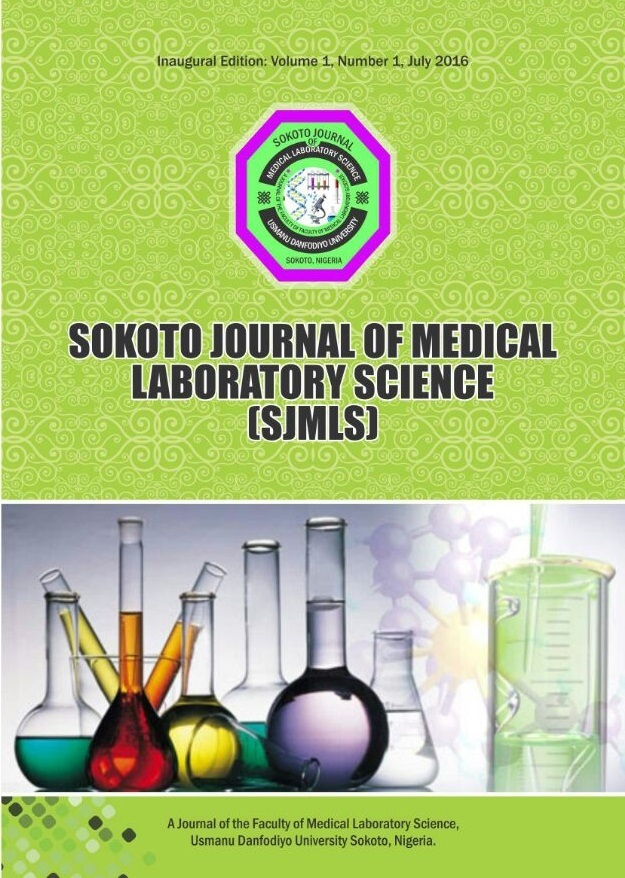Pattern of Blood Transfusion Reactions in Sokoto Specialist Hospital, Sokoto, Nigeria
Abstract
Advancement in transfusion medicine has led to the use of large quantities of blood and blood components in modern clinical practice. The purpose of this study was to determine the pattern of blood transfusion reactions among adults in Sokoto Specialist Hospital in North-Western Nigeria. This was a descriptive observational study over a 3-month period that evaluated 42 patients who had a blood transfusion reaction in Specialist Hospital Sokoto. Data was analyzed using student’s t- test and chi-square. P-values of ≤ 0.05 were regarded as significant. The mean age of the recipients was 30.26 ± 12.02 years. The incidence of febrile non-hemolytic transfusion reaction (FNHTR) was 78.6%; allergic reaction (AR) was 19.0% and acute haemolytic transfusion reactions (AHTR) was 2.4%. All the recipients that reacted presented clinically with fever and more than 90% of them had associated chills or rigors, itching and rashes. There was a significant relationship between ABO blood type and transfusion reaction (p = 0.01). Also, there was a significant relationship between pre-transfusion incompatibility and post-transfusion incompatibility in the crossmatch (p = 0.01). In a similar manner there was a statistically significant difference between the pre-transfusion and post-transfusion temperature (p = 0.01). The study concluded that protocol involving the implementation of ABO and Rhesus D blood group and crossmatching using the pre- and post-transfusion sample following a suspected blood transfusion reaction in conjunction with clinical signs will contribute immensely in establishing the pattern of reactions. There is need to implement alloantibody screening for all patients in whom a red cell transfusion is indicated in Nigeria. There is the need for the availability of other laboratory testing such as lactate dehydrogenase testing, direct antihuman globulin test and haptoglobin testing that can potentially help to detect a haemolytic transfusion reaction. Post transfusion reaction investigation should involve investigations in other Departments like chemical pathology and medical microbiology, where analysis of urine samples for haemoglobinuria, lactate dehydrogenase, haptoglobin and blood culture are needed to support the haematological findings.




